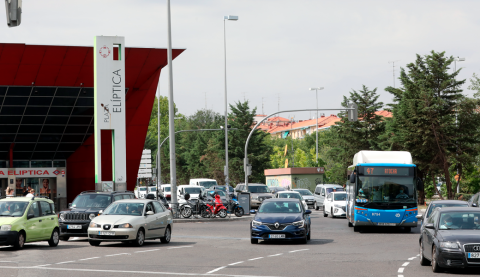With the entry into force of the new ZBE, many cars will be prevented from entering cities based on their DGT Label
The time is approaching when, based on the provisions of the Climate Change Law, all municipalities with more than 50,000 inhabitants will have to have Low Emission Zones (ZBE). Based on this, there will be more than 150 cities that, in 2023, will be able to restrict cars with labels A, B and C.
In Madrid alone, about 1.2 million vehicles are being affected by the municipal ordinance that limits the circulation of the vehicles that cause the most pollution. This means that three out of 10 cars cannot access the downtown area of the capital or the ZBE of Plaza Elíptica.
The cities that will limit the access of vehicles with an A label in 2023
According to data from the National Institute of Statistics (INE), there will be 149 municipalities with more than 50,000 inhabitants that should already be working on their ZBE. In this link you have the complete list.
There are recent reports stating that at least 30 other towns with less than 50,000 inhabitants have requested the aid approved in the General State Budgets (PGE) for 2023 to create areas limited to the most polluting vehicles.
DGT labels: when they change, how they affect you and what are the new ones
Below we review the restrictions that vehicles will have to assume, depending on their environmental sticker. Let’s go from less to more…
Vehicles with label C (the green one)
Vehicles with a C label, the green one, are gasoline-powered cars and vans registered between January 2006 and diesel vehicles put on sale since 2014. Goods transport vehicles registered from 2014, regardless of the fuel they use.
With the new Low Emission Zones of 2023, these cars will be able to circulate through any ZBE and only Madrid imposes the obligation that they pass through a parking lot (not on the surface) for the Madrid Central area.
Only Madrid establishes restrictions that differentiate the use of vehicles with a C label from ECO or Zero Emissions in its Special Protection Low Emissions Zones (ZBEEP) that it has enabled in the central almond and in Plaza Elíptica.
Vehicles with a C label that access the interior of the ZBE of Madrid Centro have free circulation but cannot leave the delimited area if they have not previously passed through a car park, whether public or private.
All the car parks inside the ZBE in Madrid are connected to the cameras that monitor the accesses and the city council’s computer system. In the entrances and exits the license plate is registered; if it corresponds to a C label, it is compared with the information provided by the car parks. If the plate is not registered by these, the driver will be penalized.
ZBE zones in Madrid: three key questions (and their answers) to move around them without fines
The same does not happen neither in the ZBE of Plaza Elíptica nor in those of Barcelona or in the area of Baixes emissions of Vigo, to cite two examples.
These limits or prohibits access to vehicles without a badge, but no restrictions are established for those with the C label.
Vehicles with label B, the yellow one
According to the environmental classification of the DGT, they receive the B label, in yellow, gasoline-powered cars and light vans registered as of January 2000, or diesel as of January 2006. goods, powered by both gasoline and diesel, registered from 2005.
With the new ZBE of 2023 these cars will be able to circulate on the perimeter streets of any province, but they cannot park on the surface in the central almond of Madrid.
Differences between the ECO label and the Cero of the DGT
As far as access and circulation restrictions in low-emission areas are concerned, vehicles with label B receive exactly the same treatment as those with label C. That is:
- In the ZBE of Madrid Centro, access and circulation are allowed, but parking on public roads is prohibited. Nor can they access if it is just passing through, that is, without staying in a car park even for a short period of time.
- In the rest of ZBE they have unlimited access and parking
Now, this could change in the coming months. Everything indicates that because they are the next in the scale of polluting vehicles, they could be vetoed in the regulations in preparation that will regulate the operation of the LEZs at the national level.
A-labeled vehicles
Here, the exiles…
The misnamed vehicles with environmental label A are those that do not have any label. This includes models powered by gasoline and diesel registered before 2001 and 2006, respectively.
With the new ZBE these cars cannot circulate in the areas delimited by the town halls, yes, with exceptions.
In Madrid, access is allowed for vehicles without a badge as long as they are owned by residents of the limited districts, are adapted for people with reduced mobility, are considered historic or are emergency vehicles.
In Barcelona, the ZBEs work differently and establish limitations by days and time slots. The city council of the city of Barcelona has just approved changes in the regulations that regulate its restricted traffic zones and softens the restrictions for cars without an environmental signal.
Based on the new regulation, in 2023, vehicles without a label will not be able to drive through the ZBE round of Barcelona more than 24 days a year, unless they belong to families with low incomes or professionals who use the car to work and are less of fives to retire.
Temporary authorizations are also granted for replenishment vehicles or those of people who have to receive medical treatment in the limited areas.











